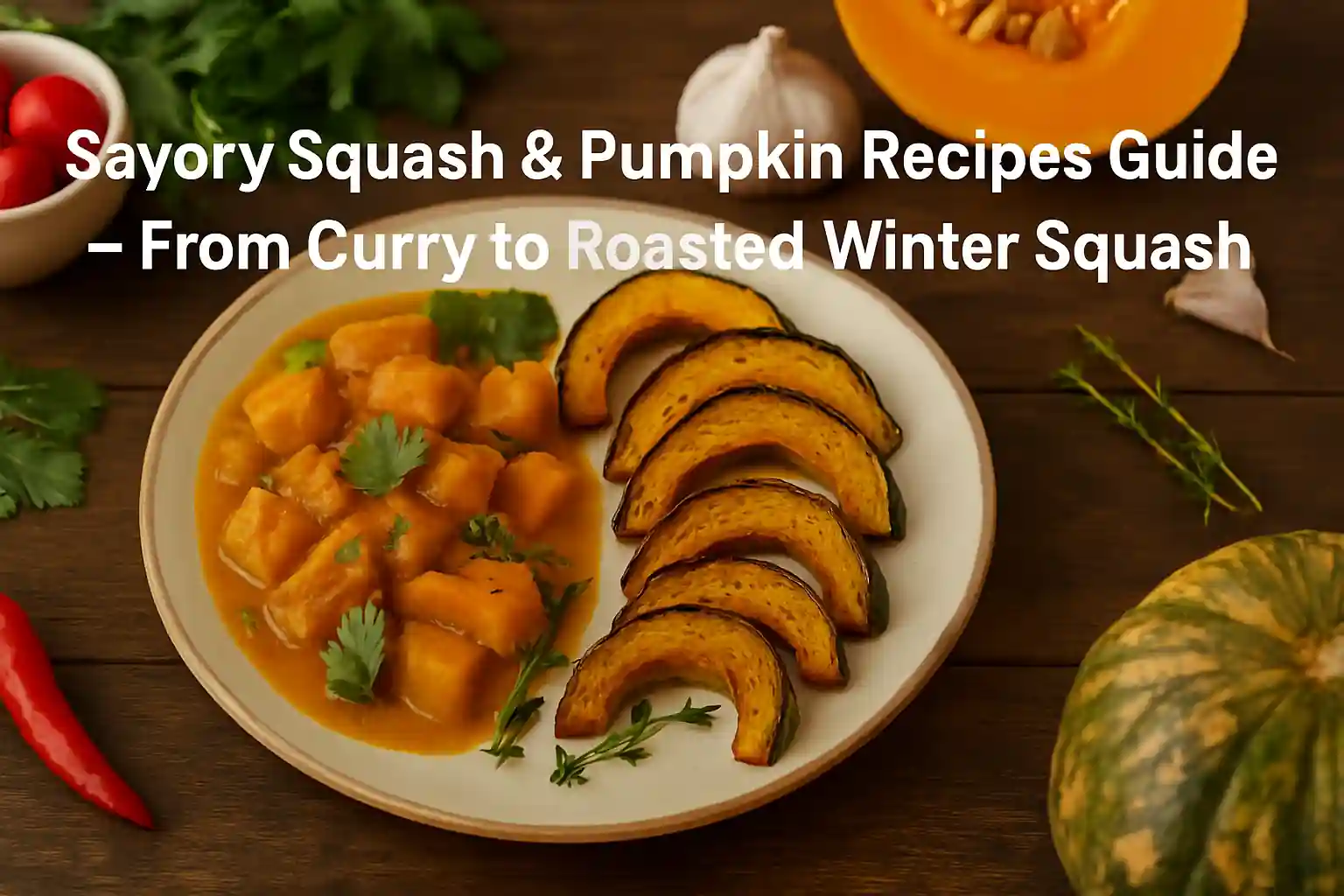Gourds and Squashes: Exploring Recipes and Cooking Techniques for the Home Kitchen
Gourds, squashes, and pumpkins are among the most versatile and nutritious vegetables (technically fruits) in the kitchen. These members of the Cucurbitaceae family offer a world of culinary possibilities—from creamy purees and savory casseroles to roasted sides and festive desserts like pumpkin pie. Whether you’re curious about butternut squash, intrigued by ornamental gourds, or simply want to discover delicious squash recipes, this guide is designed to provide everything you need to make informed, healthy, and flavorful choices.
Understanding the Gourd Family
What is a Gourd?
A gourd is a hard-shelled fruit that comes from a plant in the Cucurbitaceae family. While some gourds usually serve decorative purposes (called ornamental gourds), many varieties are edible and widely used in cuisines around the world. Unlike summer squash, gourds generally have a hard rind and longer shelf life.
Edible vs Ornamental Gourds
Not all gourds are edible. Ornamental types are often hard and inedible, while others like bottle gourd or calabash can be safely consumed when young and tender. Always verify a gourd’s edibility before adding it to your dish. A good source to understand the difference is the Missouri Botanical Garden.
The World of Squash
What is a Squash?
A squash is a fruit used as a vegetable in cooking. Squashes are divided into two broad categories: summer squash (e.g., zucchini) and winter squash (e.g., acorn squash, butternut squash). While summer squash have tender skins and require minimal prep, winter squash need to be cooked and often need to be peeled.
Types of Squash
Butternut Squash
Known for its sweet and nutty flavor, butternut squash is one of the most popular winter squash types. Its dense, orange flesh is soft when cooked and perfect for soups, stews, and even mash.
Acorn Squash
Shaped like a giant acorn, this winter squash variety is ideal for roasting. You can cut the squash in half, scoop out the seeds, and roast it with maple syrup and herbs.
Spaghetti Squash
True to its name, spaghetti squash reveals strands that resemble pasta once cooked. You can add the squash to tomato sauce or simply serve it with olive oil and garlic. It’s ideal for those looking for low-carb options that feel like pasta.
Pumpkin: More Than Just Pie
What is Pumpkin?
A pumpkin is a round, orange type of winter squash that’s most famous for its role in desserts like pumpkin pie and seasonal flavors such as pumpkin spice. However, it can also be the star in savory dishes like soups and pumpkin curry.
Using Pumpkin in Cooking
Pumpkin can be used in fresh, frozen, or canned pumpkin forms. The flesh is soft when roasted or steamed and can be pureed into soups and sauces. Pumpkin seeds are also edible, rich in vitamins A and C, and make a great roasted snack or garnish.
Learn more about pumpkin nutrition and benefits from Harvard T.H. Chan School of Public Health.
Essential Squash Recipes for Home Cooks
Roasted Butternut Squash
- Ingredients: butternut, olive oil, salt, pepper, garlic
- Method: Cube the squash, toss in oil, and roast until brown and tender.
Pumpkin Curry
This savory and fragrant dish pairs pumpkin with coconut milk, turmeric, and cumin for a warming dinner. Serve it with quinoa for added nutrition.
Stuffed Acorn Squash
- Ingredients: Acorn squash, wild rice, cranberries, nuts
- Method: Scoop out the seeds, roast the halves, and stuff them for a complete meal that showcases fall flavors.
Spaghetti Squash with Garlic & Herbs
- Ingredients: Cooked spaghetti squash, olive oil, garlic, parsley
- Method: Saute garlic in oil, add the squash, and toss with fresh herbs. A quick weeknight dinner that’s as satisfying as like pasta dishes.
Preparing Squash and Gourds: Tips and Techniques
How to Cut the Squash Safely
Use a sturdy cutting board and a sharp knife. For harder winter squash, soften them slightly in the microwave. Always cut the squash lengthwise and scoop out the seeds before cooking.
Do You Need to Peel Squash?
Not always. Delicate varieties like delicata have thin skins you can eat. For tougher types like butternut squash, a vegetable peeler works best.
Cooking Methods
- Roasting: Enhances the nutty flavor and gives a brown, caramelized finish
- Sauteing: Great for quick weeknight dinner recipes
- Pureeing: Ideal for soups, sauces, and baby food
- Mashing: Works well with butternut and pumpkin
For step-by-step safety tips, check the University of Nebraska–Lincoln’s food safety site.
Seasonal Availability and Storage
Harvest Time
Most winter squash varieties are harvested in late summer through fall. Properly cured squash can last for several months in a cool, dry place.
Storage Tips
- Keep in a dark, dry pantry
- Store cut pieces in the refrigerator
- Cooked squash can be frozen or pureed and stored in ice cube trays
Nutritional Benefits of Squash and Pumpkin
Both squash and pumpkin are rich in:
- Vitamins A and C
- Potassium
- Fiber
- Antioxidants
Including them in your diet supports vision, immunity, and digestive health. See more details from the Cleveland Clinic.
Fun Facts and Lesser-Known Varieties
Delicata
This edible squash doesn’t require peeling and has a nutty flavor. Its small size makes it perfect for single servings.
Potato Squash
Similar in texture to mashed potatoes when cooked—ideal for comfort food dishes.
Mash and Puree Possibilities
You can mash many types of squash and gourds or puree them into soups, sauces, and baby food.
Pumpkin Spice Craze
While pumpkin spice doesn’t always contain real pumpkin, it’s inspired by the flavor profile of cinnamon, clove, and nutmeg traditionally used in pumpkin pie.
Final Thoughts: Why Squash is the Perfect Kitchen Staple
Whether it’s a hearty winter squash soup or a savory pumpkin curry, squash and gourds offer taste, nutrition, and versatility. From roast dishes to recipes that are like pasta, these humble fruits of the gourd family deserve a central spot in every home cook’s kitchen. They are not just ornamental—they’re hearty, health-boosting, and endlessly adaptable.
For more inspiration on how to incorporate squash into your meals, visit The Spruce Eats Squash Guide.

